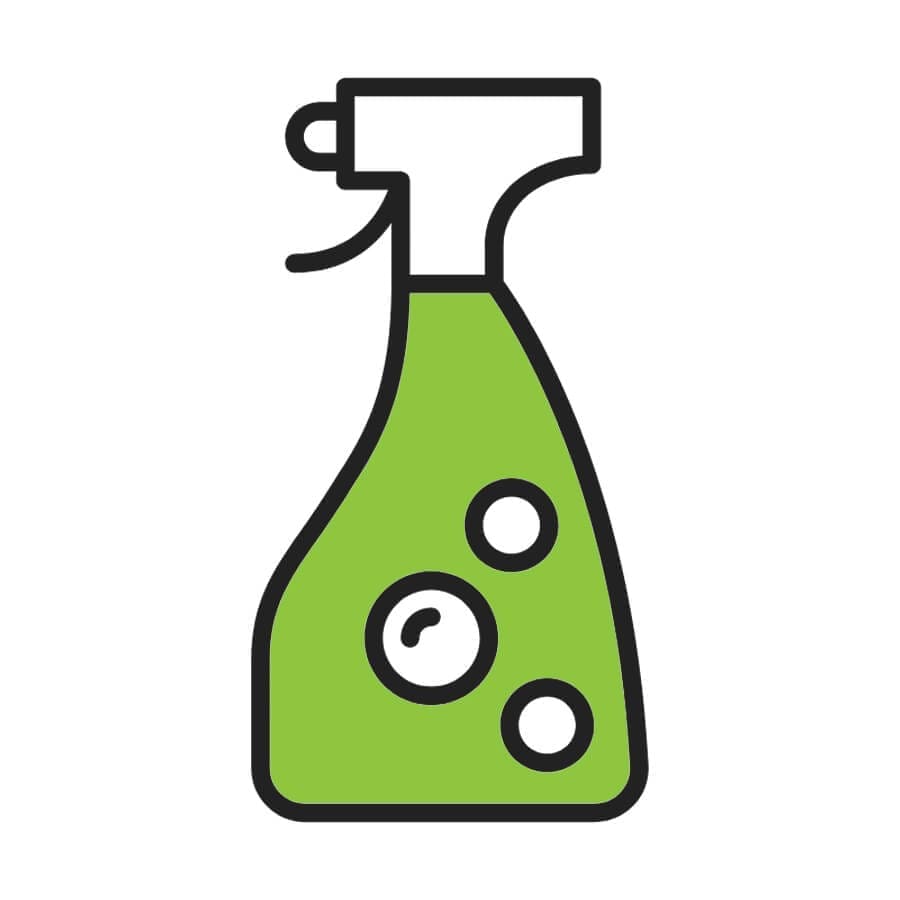What Does VOC Mean?
Volatile organic compounds, or VOCs for short, are a crucial part of indoor air quality discourse. You really can’t talk about IAQ without talking about VOCs.
These compounds can be extremely dangerous, yet many homeowners are unaware of their existence. Consider the following information an all-inclusive guide to understanding VOCs and their impact on indoor air quality.
The VOC Breakdown
Volatile organic compounds are chemicals emitted from gases, liquids or solids. They have high vapor pressure and low water solubility. In other words, these compounds evaporate easily but struggle to dissolve in water. There are over 10,000 VOCs, and many of them are human-made.
While VOCs are found both indoors and outdoors, VOC concentrations are often higher indoors—up to ten times more! Let’s take a look at some of the most common VOCs, how they transmit and how they impact indoor air quality.
The Science of VOCs
Organic compounds are classified into three different categories: very volatile organic compounds (VVOCs), volatile organic compounds (VOCs) and semi-volatile organic compounds (SVOCs). As organic compounds become more volatile, their probability of emission increases.
As the most volatile of volatile organic compounds, VVOCs often exist in gas form. VVOCs include propane, butane and methyl chloride.
The term VOCs is often used broadly to include VVOCs and SVOCs. However, true VOCs are distinguished from VVOCs and SVOCs based on their boiling point temperature. VOCs include formaldehyde, acetone, ethanol and hexanal.
Although less volatile, SVOCs are still dangerous. SVOCs include pesticides, fire retardants and plasticizers.
How Are VOCs Emitted?
VOC emissions occur in a process known as off-gassing. Quite literally, off-gassing refers to a chemical released in vapor form. Off-gassing is at its worst when the VOC-emitting product is either brand new or recently applied. Consider the last time you bought new furniture or even a tightly wrapped Amazon package … if there was a distinct smell, you actually experienced off-gassing. However, off-gassing is not confined to that initial moment. In reality, VOC emissions can last hours, days, weeks or years depending on a multitude of factors.

At any moment, there are thousands of different airborne toxins in your indoor environment. They originate from a plethora of products and materials—those that are both in your control and those that you don’t have a say in. From building materials to cleaning products to electronic devices, the list is almost endless.
The following are common indoor sources that emit VOCs:
- Paints, paint strippers and solvents
- Wood preservatives
- Aerosols
- Disinfectants
- Personal hygiene products
- Dry-cleaned clothing
- Glues and adhesives
- Permanent markers
- Copiers and printers
- Cleaning products
The following are outdoor sources that emit VOCs:
- Gasoline
- Diesel emissions
- Oil and gas extraction and processing
- Industrial emissions
- Tobacco smoke
- Wood burning
 Source Control: Controlling the source of indoor air pollutants is only possible if you know what and where the source is! Wondering where indoor pollutants are lurking in your home? Check out this room-by-room breakdown →
Source Control: Controlling the source of indoor air pollutants is only possible if you know what and where the source is! Wondering where indoor pollutants are lurking in your home? Check out this room-by-room breakdown →Why Are VOCs So Dangerous Indoors?
VOCs significantly reduce indoor air quality, creating a dangerous atmosphere for occupants. According to the Environmental Protection Agency, VOCs also cause adverse health effects, such as:
- Eye, nose and throat irritation
- Headaches, loss of coordination and nausea
- Damage to liver, kidney and central nervous system
- Some VOCs are suspected or known carcinogens
Potential VOC exposure symptoms to watch out for include:
- Eye irritation
- Allergic skin reaction
- Difficulty breathing
- Nosebleeds
- Fatigue
- Dizziness
The extent to which off-gassing affects someone depends on the level of exposure and the length of time. Presumably, the higher the concentration and the longer the exposure time, the more severe an individual’s reaction will be.
Of course, considering how widespread VOCs are, it likely seems impossible to avoid them. The good news? A mix of healthy home habits, product changes or home IAQ upgrades can all help create healthier indoor air. Changes as easy as purchasing different nontoxic or less toxic products, carefully following directions, proper disposal of products, utilizing natural ventilation or upgrading to mechanical ventilation will make all the difference.
Don’t Fall Prey to VOCs
Volatile organic compounds and indoor air quality do not mix. Unfortunately, we often unknowingly allow these chemicals into our homes by purchasing products that contribute to off-gassing or storing toxic chemicals in our daily spaces.
The most important line of defense is to become knowledgeable about indoor air pollutants that seriously impact your health. Then, with awareness, you can make healthy housing changes.



